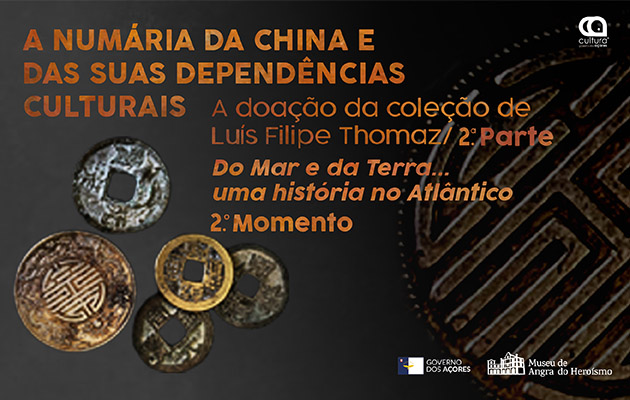From Sea and from Land... a history of the Atlantic | II Moment
This exhibition features a second set of coins donated to the Museum of Angra do Heroísmo by the collector Luís Filipe Thomaz this July, this time of Chinese origin. From the outset, Chinese imperial coinage showed particular characteristics that would persist until the end of the 19th century, both in China and in the countries it influenced, such as Japan, Korea and Vietnam. From the 3rd century BCE onwards, the coins were all circular, cast almost exclusively in copper and its alloys, bronze and brass, and with a hole in the centre, so that they could circulate in hundreds stuffed into bundles. This allowed for the payment of certain sums and thus made up for the lack of noble metal coins, since these were only amassed to produce luxury coins for imperial gifts.
They show no images, having only two or four chinese charaters imprinted on them, the reverse side being devoid of any imagery. They are called sapecas in portuguese. Sapeca being derived from the malasian or javanese word for a unit of hundred. In portuguese, however, it was immediatly used to designate each unit. They were also called “caixas”, a term of Dravidian (South Indian) origin, meaning “small coin”.
The first silver coins immited by the government, simillar to the ones in Europe, the Muslim World, India and South Easte Asia, with the exception of Vietnam, only appeared in 1889, once global coin standardization reached the area. These were known to the portuguese as patacas.
